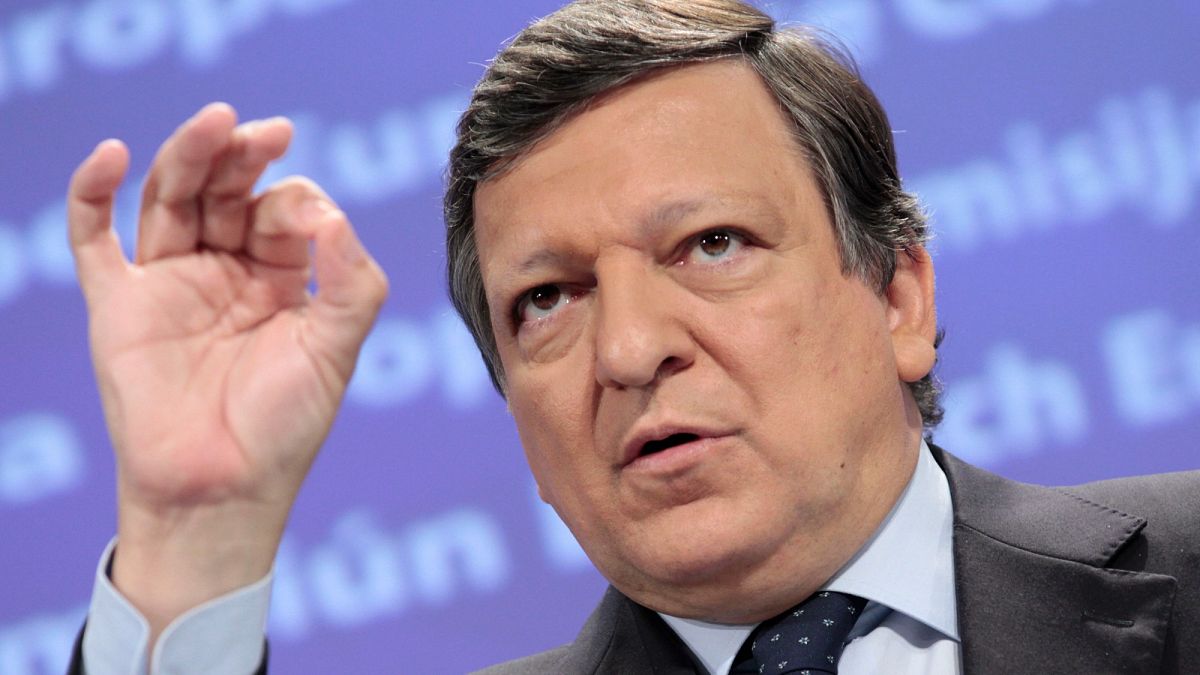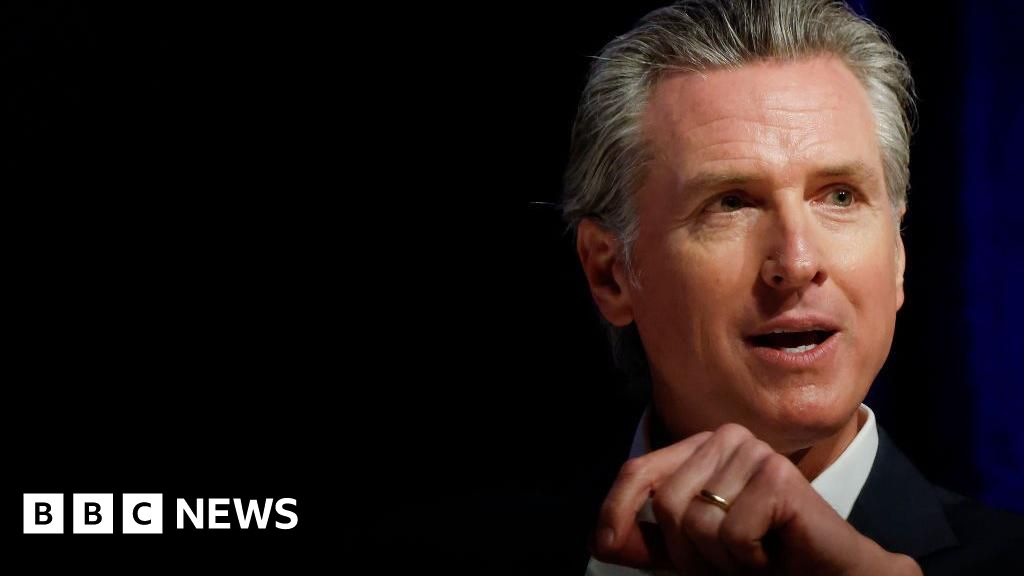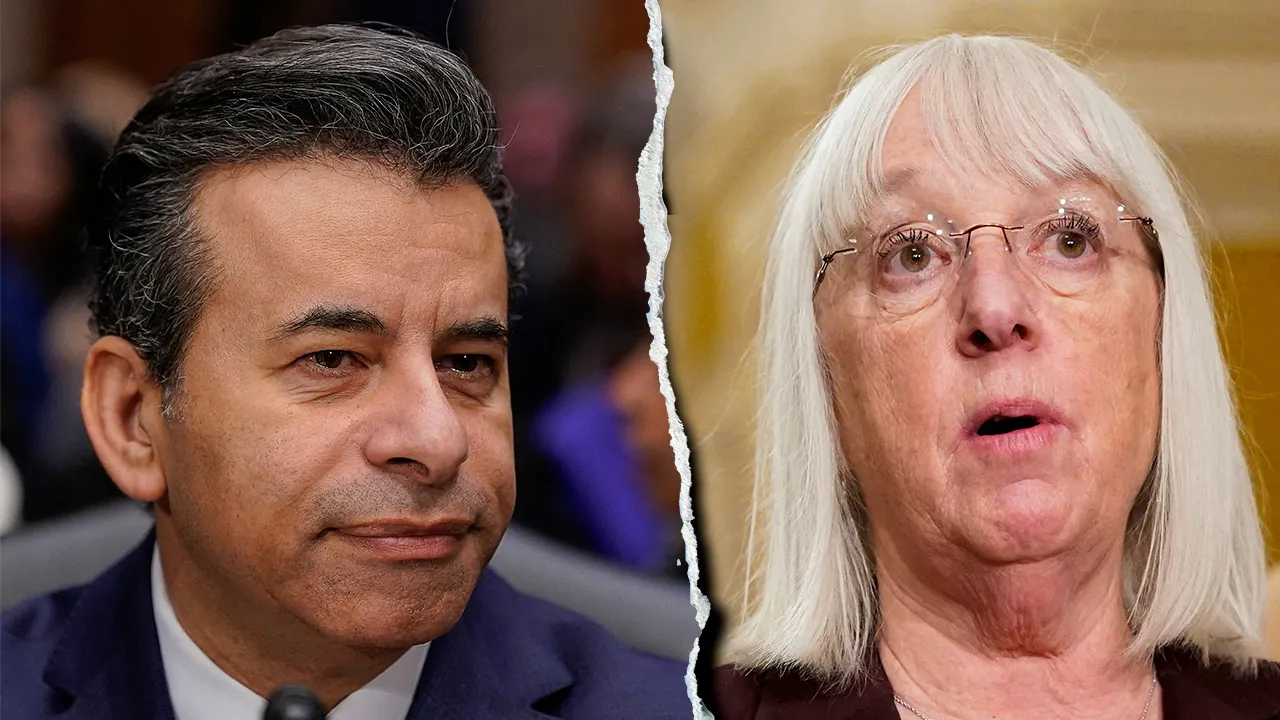Sports
Who will Jake Paul fight next — a boxer, athlete or celebrity — and when? MVP exec talks options

The last fight for Jake Paul was a global phenomenon.
An estimated 108-million live viewers in around 65 million households worldwide tuned in to Netflix last month to see the influencer-turned-boxer defeat legendary fighter Mike Tyson in a unanimous decision, making it the most-streamed sporting event.
Paul, 27, and Tyson, 58, reportedly made tens of millions of dollars from the event in Texas.
It’s only a slight exaggeration to say that everybody wants to be the next person to face Paul (11-1, 7 KOs).
“It’s boxers, it’s athletes, it’s celebrities — pretty much everyone in the world wants to challenge Jake Paul at this point in time, which is pretty remarkable just four years into his career and 12 fights as a professional,” said Nakisa Bidarian, who co-founded and runs Most Valuable Promotions with Paul.
So who will it be? And which platform will get to air the next fight that may attract millions of more eyeballs? Bidarian couldn’t say — not because it’s a closely guarded secret, but because those decisions have yet to be made.
“We’re definitely still looking at what the options are,” Bidarian said. “It starts with getting to an alignment with MVP, Jake and the rest of the company on where we’re going to put our product going forward. We obviously have been very successful with DAZN, we’ve been very successful with Netflix, we’ve been successful on pretty much every platform that we’ve been on.
“And now we’re at a point in time where we want to have a long-term media rights partner. Part of that would include Jake Paul, part of that would include Amanda Serrano and the rest of the MVP roster that we’re building. And then once we have that, we can then determine what’s the next appropriate step for Jake based on his career path, ambitions and aspirations.”
Bidarian offered some insight into those decisions, a time frame for when Paul’s next fight will take place, the massive success of the Tyson fight and more during a phone interview Thursday.
(The questions and answers have been edited for length and clarity)
What is the thought process in determining Paul’s next opponent?
It’s a very unique set of circumstances. We’re at a point in the sport of boxing where there is definitely a transition from the old guard to the new guard. Whether it’s Tyson Fury and [Oleksandr] Usyk, who are fighting in a couple of weeks, whether it’s Anthony Joshua or whether it’s Canelo [Álvarez] — any big name in the sport you can think of, they’re all getting to a point where their prime may be fading. When you look at the next generation, there’s really three names in the U.S. from my perspective. One, by a longshot, being Jake, that no one comes close to. And then there’s two other guys who’ve called out Jake — [Gervonta] “Tank” Davis and Ryan Garcia.
Jake’s never been in a more fortunate position in terms of demand, and when I say demand I mean in terms of distribution partners that want to work with him and MVP and also in terms of fighters that want to share the ring with him because they understand the kind of box office and attention that he drives.
Jake has two paths that he’s focused on. The most important path to him is to become a world champion. … He’s going to continue on the path to grow as a boxer, increasing the level of competition to then get to the point where he can challenge for a championship. And then he’s also going to look to do these disruptive, big events which … are still gonna be very competitive. Very, very competitive.
Is there any particular opponent that might pique his interest over the other possibilities?
I think we’re just evaluating. Part of when you have so much success is, you know, the biggest names are calling him out, but everyone has an expectation that is I’m gonna make tens of millions of dollars to fight Jake Paul. And we pay people very well and we want to be in a business that is profitable for all parties, but we’re not gonna do things that don’t make economic sense. So part of the process is understanding what opponents are realistic.
Is there a timetable in mind for Jake’s next fight?
We’re holding dates in different cities starting in mid-April all the way through mid-July, so giving ourselves the flexibility to have him return anywhere from April to July.
Were you expecting the Tyson fight to generate as much interest as it did?
I think what surprised us was how the entire world was interacting with this event. Seventy-eight countries on Netflix, it’s the No. 1 piece of content. There’s no piece of content like that that exists. It just doesn’t happen. ‘Cause even the World Cup final, there’s two countries that are highly engaged and there’s a lot of countries that don’t care. The Olympics on any given day there’s different competitions and different teams and different rounds that pique and don’t pique interest. So we had something that — you know, Super Bowl, unbelievable viewership, but highly concentrated.
It was the first time — I heard this from multiple journalists — where journalists’ mothers, women who were in their 50s, 60s, 70s, were talking to the journalists’ children about a fight. That just doesn’t happen. So that was a very special combination when you connected to different audiences of these two guys and what it meant.
Did any of this even seem possible just a few years ago?
When we started MVP in August of 2021, we certainly had a vision of doing big, disruptive things. And if you look at Jake’s events, no matter how you slice ‘em, if you look at pure global interest, pure social media, they’re the biggest events outside of the Super Bowl. The amount of people who want to view and see what he’s up to is pretty phenomenal. And we do that with the right match making and bringing different audiences together. But did we think that we could within three years partner with the biggest media platform in the world and effectively break the internet? No.

Sports
Naomi Osaka calls Indian Wells loss to Camila Osorio the worst match she has ever played

Naomi Osaka showed that she is on the road to recovery from the abdominal injury that forced her out of the Australian Open in January, but getting sharp and match tough is going to take a little more time.
Osaka, the four-time Grand Slam champion and former world No. 1, lost to Camila Osorio of Colombia, the world No. 53, in straight sets Wednesday night (6-4, 6-4) in the first round of Indian Wells. On social media, she later described the defeat as the “worst match I’ve ever played in my life.”
Osaka, ranked 56th, and Osorio were dead even through the first eight games, but Osaka committed a flurry of errors while serving at 4-4. It gave Osorio the chance to serve out the set, and the spunky Colombian didn’t waste it.
The game was a microcosm of the match. Osaka committed errors every which way. Balls flew long and wide. Some missed by a few inches. Others missed by a few feet.
The errors were especially prevalent when Osaka was under pressure. Osaka and Patrick Mouratoglou, her coach since September, focused on that dynamic for months and seemed to have made headway as Osaka got on a roll at the start of the year.
Osaka made the finals in Auckland and was rolling against Clara Tauson when she aggravated an abdominal injury and had to retire after the first set. Osaka played some of her best tennis since her return from maternity leave at the beginning of 2024 through 2 1/2 matches at the Australian Open, including a win over Karolina Muchova, one of the world’s top players.
Then, Osaka strained the muscle again and had to retire from her third-round match with Belinda Bencic after the first set. She had dominated Bencic until the injury.
Osaka returned to California and rested. But she had two hard weeks of training ahead of Indian Wells, and Mouratoglou pronounced her ready to go. Physically, perhaps, but the tennis just wasn’t there.
“It’s crazy for me, a dream come true,” said Osorio, 23, who had never won a match in Indian Wells. Her win marked the first time a woman from Colombia has beaten a former world No. 1.
For Osaka, who won Indian Wells in 2018, the loss allows her to rest before she heads to the Miami Open, one of the events closest to her heart and near where she grew up in South Florida. After her defeat, Osaka confirmed that her body is fit, but her form just was not there.
“I don’t think I was too good on my end,” she said in her news conference.
She described a frustrating month after the Australian Open in which she was not allowed to play for a week, could not serve for another week, then was allowed to slowly begin serving but only if she slowly increased her intensity week by week so as not to reinjure her abdominal muscle.
“I did well in Australia,” she said. “It feels a little bit like stopping starting again.”
That said, even with the loss, Osaka said her start to the year feels far better than last year, when she struggled to find any consistency. Or maybe she’s getting used to the idea she will likely never have a smooth ride back to the top of the sport.
“It feels like a bump in the road,” she said. “I don’t feel like I played well at all, but I still feel like I had so many chances to be in the match.”
Required reading
(Photo: Clive Brunskill / Getty Images)
Sports
FBI adds former Olympian to most wanted list, offers $10 million reward

The FBI added a former Olympian and a Canadian national to its list of top 10 most wanted fugitives on Thursday.
The U.S. State Department is offering a reward of up to $10 million for the capture of Ryan Wedding, 43. Wedding, who competed in a snowboarding event for Canada in the 2002 winter Olympics, is wanted for allegedly running “a transnational drug trafficking network.”
FBI Los Angeles chief Akil Davis said in a press conference Thursday that Wedding’s alleged trafficking ring “routinely shipped hundreds of kilograms of cocaine from Colombia, through Mexico and Southern California, to Canada and other locations in the United States, and for orchestrating multiple murders and an attempted murder in furtherance of these drug crimes.”
“Wedding went from shredding powder on the slopes at the Olympics to distributing powder cocaine on the streets of U.S. cities and in his native Canada,” Davis said in a statement.
LA MAYOR BASS’ CLASHES WITH REPORTERS ON WILDFIRES REMOVED FROM LEADER’S SOCIAL MEDIA, LIVESTREAMS
“The alleged murders of his competitors make Wedding a very dangerous man, and his addition to the list of Ten Most Wanted Fugitives, coupled with a major reward offer by the State Department, will make the public our partner so that we can catch up with him before he puts anyone else in danger,” he added.
Davis noted that Secretary of State Marco Rubio approved the $10 million reward for Wedding’s capture. The FBI is also offering an additional $50,000 for information leading to his arrest.
Wedding was previously convicted in the U.S. of conspiracy to distribute cocaine, and he was sentenced to prison in 2010, according to federal records.
The FBI says Wedding’s aliases include “El Jefe,” “Giant,” “Public Enemy,” “James Conrad King,” and “Jesse King.” They say he is roughly 6’3″ and 240 pounds.
Federal authorities first issued an arrest warrant for Wedding in September of last year, but he has still not been apprehended.
CHARGERS’ JIM HARBAUGH ON CONTROVERSIAL TUSH PUSH: ‘GET GOOD AT IT OR STOP IT’
Thursday’s announcement comes just after the Justice Department announced the capture of one of Wedding’s alleged accomplices, Andrew Clark, 34. Clark, a Canadian citizen who was living in Mexico, was arrested by Mexican authorities in October 2024 and is scheduled to be arraigned Monday in U.S. District Court in Arizona.

The FBI is cracking down on drug trafficking across both of America’s borders under new director Kash Patel. (Anna Moneymaker/Kent Nishimura)
The indictment says Wedding and his associates conspired to deliver shipments of hundreds of kilograms of cocaine from Los Angeles to Canada using long-haul semi-trucks.
Wedding is charged with conspiracy to distribute and possess with intent to distribute controlled substances; conspiracy to export cocaine; continuing criminal enterprise; murder in connection with a continuing criminal enterprise and drug crime; and attempt to commit murder in connection with a continuing criminal enterprise and drug crime.
Sports
Tutu Atwell and Rams agree to terms on one-year, $10-million contract

While the Rams continue their attempt to trade star receiver Cooper Kupp, they moved Thursday to make sure quarterback Matthew Stafford still has another familiar face to pass to.
The Rams have agreed to terms with pending free-agent receiver Tutu Atwell on a one-year contract that includes $10 million in salary and bonuses, a person with knowledge of the situation said Thursday. The person requested anonymity because the deal has not been finalized.
Atwell, 5 feet 9 inches and 165 pounds, was a surprise second-round draft pick in 2021. After a rough rookie season, the speedy and diminutive Atwell became a solid contributor in a receiver corps that eventually included Kupp, Puka Nacua and Demarcus Robinson.
Nacua supplanted Kupp, who struggled with injuries the last three seasons, as the No. 1 receiver in coach Sean McVay’s offense. He is expected to lead a unit that now includes Atwell, second-year pro Jordan Whittington and will grow during free agency and the draft.
Unless he is re-signed, Robinson will become a free agent Wednesday.
Kupp is due to earn $20 million in salary and bonuses this season, according to Overthecap.com. He is due to receive a $7.5-million bonus next week, so the Rams are working to trade him before that comes due.
“We’re working to try to find a partner and a next chapter for Cooper and ourselves,” general manager Les Snead said Wednesday.
Last season, Atwell had 42 catches for 562 yards, both career bests. He earned about $1.5 million in salary in 2024, according to Overthecap.com.
Atwell is the second pending free agent to re-sign with the Rams.
Left tackle Alaric Jackson received a three-year contract that includes $35 million in guarantees.
-

 Sports1 week ago
Sports1 week agoNHL trade board 7.0: The 4 Nations break is over, and things are about to get real
-

 News1 week ago
News1 week agoJustice Dept. Takes Broad View of Trump’s Jan. 6 Pardons
-

 World1 week ago
World1 week agoHamas says deal reached with Israel to release more than 600 Palestinians
-

 Science1 week ago
Science1 week agoKilling 166 million birds hasn’t helped poultry farmers stop H5N1. Is there a better way?
-

 News1 week ago
News1 week agoChristianity’s Decline in U.S. Appears to Have Halted, Major Study Shows
-

 World1 week ago
World1 week agoGermany's Merz ‘resolute and determined,' former EU chief Barroso says
-

 Technology1 week ago
Technology1 week agoMicrosoft makes Copilot Voice and Think Deeper free with unlimited use
-

 Culture1 week ago
Culture1 week agoOstriches, butt cheeks and relentless energy: How Austin Hedges became an indispensable MLB teammate















